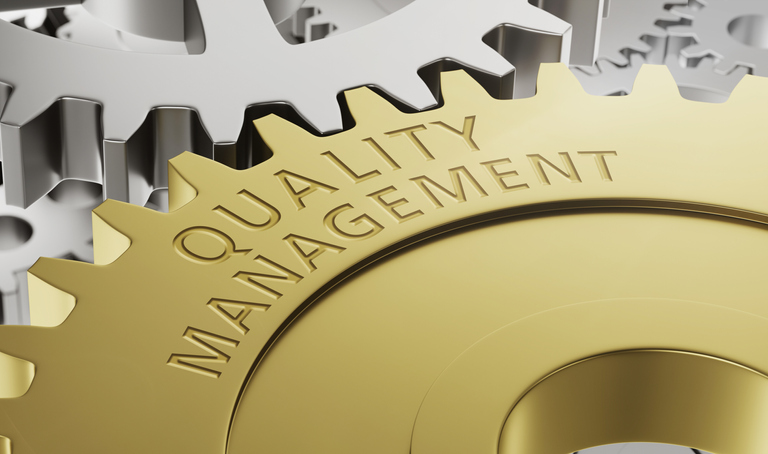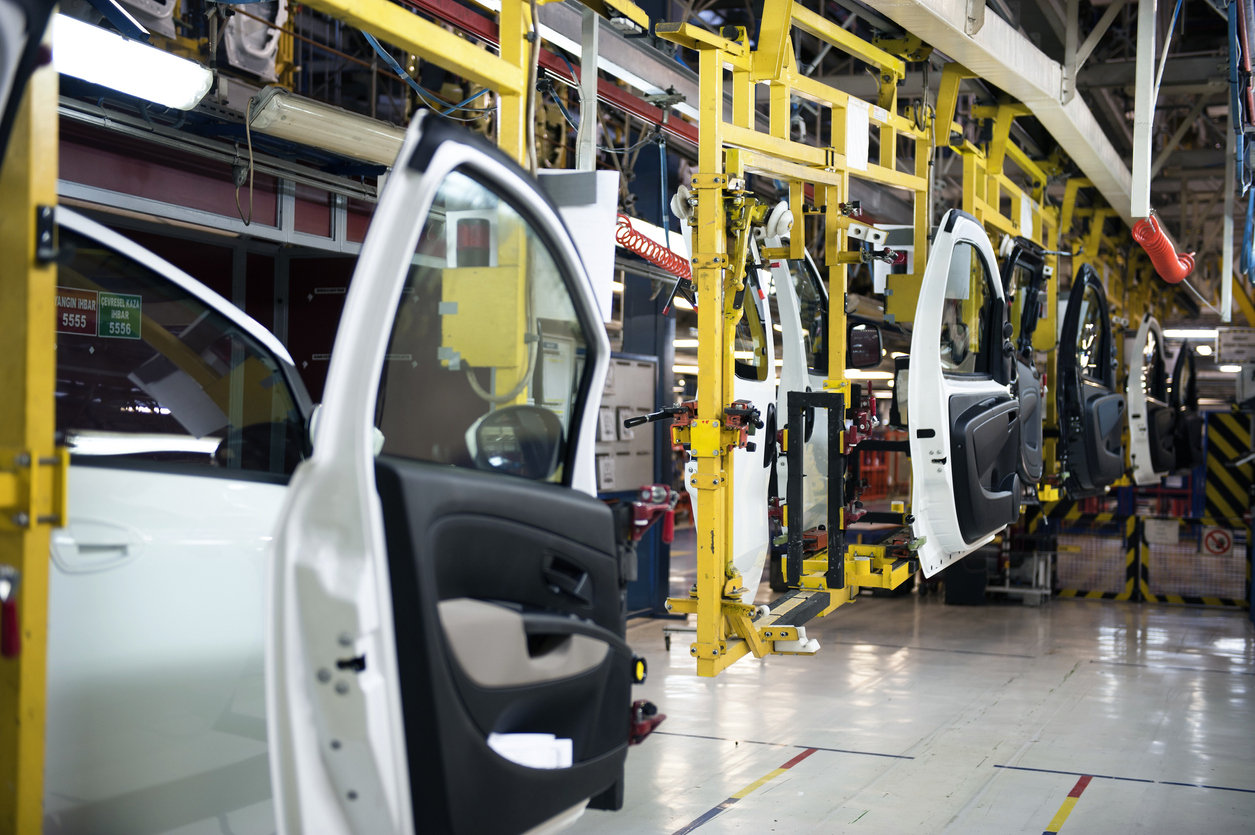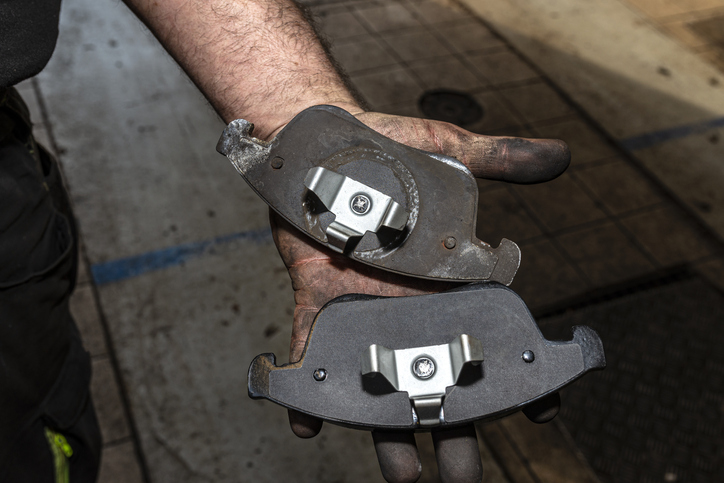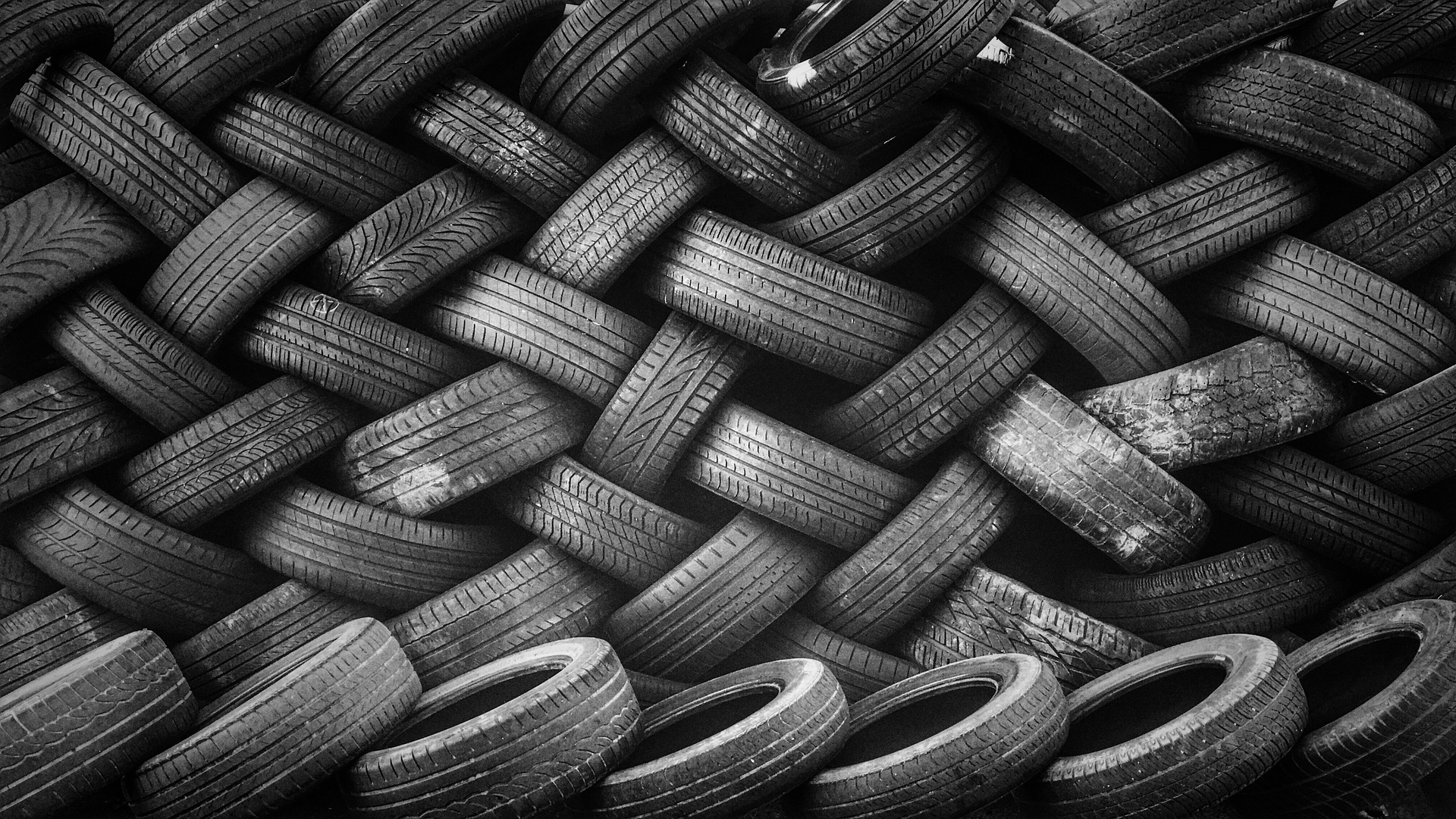Used parts: How to check the quality of used car parts

Content
1. Lighting, mirrors and glazing
2. Electronic components and vehicle electrics
3. Body parts and trim elements
If the car is broken, it can be repaired cheaply thanks to inexpensive used parts. However, all spare parts from car recycling should be comprehensively checked. What has already been done by the car recycling company when you buy online, you have to do yourself when you dismantle it at the scrap yard. We give recommendations on how you can check various car parts.
Read more: Car recycling: What happens to the car when it is recycled?
Lighting, mirrors and glazing
Car parts such as headlights, rear lights, mirrors and vehicle glazing are often damaged in accidents. Before installation, you should inspect the parts for defects.
- Headlights, indicators and tail lights: For vehicle headlights and tail lights, carefully inspect the headlight glass and lenses for damage. Reflectors inside should not be dull, and the headlight glass should not be cloudy or fogged.
- Mirrors: Parts such as side mirrors and interior mirrors must have an intact mirror surface and a sound housing. In addition, you should check the tight fit of the mirror fastening. You should also test whether the mirror can be adjusted as intended.
- Vehicle glass: Windscreens, rear windows and side windows of cars are damaged particularly quickly. You should check spare parts from car recycling for cracks and fissures on the edge of the windscreen. In addition, there should be no stone chips in the windscreen.
Electronic components and vehicle electrics
Modern vehicles have numerous on-board systems and electronic helpers. Sometimes, however, electrical components and electronic parts break down, so that inexpensive replacements are in demand.
- Switches and relays: You can check mechanical switches and relays before installation if you have a suitable measuring device or continuity tester at hand. The switches should switch smoothly and the symbols should not be worn.
- Control unit: In modern cars, several control units are sometimes installed, which you can obtain as inexpensive used parts in the event of a defect. However, checking them before installation is difficult and requires special measuring equipment. Trust is required here.
- Power window motor: Power windows have their own electric motors that sometimes stop working. Used screenengines should have a clean appearance with no loose parts. Sometimes you can test the function with a battery on site.
Body parts and trim elements
Parts of the bodywork are particularly easily damaged in accidents or fall victim to rust. Used car parts from car recycling help your vehicle to shine again.
- Doors and bonnets: Vehicle doors, bonnets and boot lids should be visually inspected before purchase. You should be sure that the paint colour is correct and also check the seams and lower edges of the doors for rust. For glazing, you should check the glass.
- Bumpers and mudguards: Bumpers and mudguards should also be checked before purchase. Plastic bumpers should be checked for cracks and damaged areas. Mudguards should have intact attachment points and not already be affected by rust.
- Spoilers and trim elements: You must check edge protectors and trim strips made of rubber for intact material without porous spots. Chrome trim parts and chrome trim should have a flawless surface. Spoilers must be checked for cracks and break-offs.
Chassis, wheels and brakes
All components under the vehicle floor are subject to increased wear. Chassis parts, brake components and wheels are particularly affected, but can be replaced cheaply in the form of used parts.
- Chassis parts: Parts of the chassis should be neither rusted nor worn. Components such as stabilisers, wishbones and steering parts should be visually inspected. If shock absorbers are bought used, you should check them for oil leakage.
- Wheels and rims: Complete wheel sets or aluminium rims can also be bought cheaply from car recycling. The wheel studs should be in good condition and the rim should not be visually damaged. Aluminium rims should be checked for break-offs at the rim edge.
- Brake system: All components of the brake system are safety-relevant parts. A thorough inspection is particularly important here. Brake components should not be worn or rusted. For used brake discs, you should check material thickness and wear.
Engines and gearboxes
Complete engines, engine parts and gearboxes are among the used car parts that are frequently requested from car recycling companies. If the car recycling company in your area cannot offer anything suitable, it is advisable to buy them cheaply online.
- Engines: You can only partially check the function of complete vehicle engines on site. Sometimes it is possible to turn the engine over and take a close look at the components. Look for cracks in the block, leaks and the general condition.
- Gearboxes: Manual and automatic gearboxes are difficult to test when removed. With manual transmissions, the shifting process can sometimes be tested. If it is possible, you can take a test look at the gearbox oil.
- Engine components: It is sometimes possible to test the function of engine parts and attachments. For example, starters can be tested by applying voltage. Intake manifolds and exhaust manifolds should be checked for cracks, pumps for leaks.
Used Parts FAQ – 3 Questions about Car Recycling
- Can I return purchased car parts? – What many people don’t know: In Germany, local dealers are not obliged to take back goods once they have been sold. This also applies to car recycling companies, where parts are often only taken back as a gesture of goodwill. Online car parts portals such as Autoparts24, on the other hand, offer the possibility of return.
- Which parts should I rather buy new? – Some car parts should not be purchased as used parts, but rather as new parts. These include wear parts such as brake pads, as well as seals, belts, filters and fluids. The same applies to bushings, sleeves and other parts made of rubber or elastomers, which cost little when new and wear out over time.
- What do I do if used parts are defective? – If used car parts do not correspond to the stated condition, the dealer must take back the defective spare part or exchange it for an intact part. It is irrelevant whether the goods were purchased from a car recycling company near you or via an online platform for car spare parts.
Buy used car parts at Autoparts24
If you need used parts for your car, you are sure to find what you are looking for at Autoparts24.eu. The range includes many used car parts that have been removed in the course of car recycling. The practical search function makes it easy to find OEM car parts for your vehicle. Simply select the manufacturer and model name, or enter the vehicle registration number. All available spare parts are sorted by category and clearly listed. You can easily check whether the used part you have found fits using the original number and thanks to numerous photos.
Advantages of shopping scrap car parts online vs. going to the local breaker yardsl
If you’re the kind of person who does repairs on your own car or likes to save money on finding the right parts yourself, then you’ve probably tried finding and buying parts at the local car breaker/junkyard. But there are…
Read more
OEM car parts manufacturing: the key components of the sector
Today, a car is made up of numerous different components. The OEM car parts installed at the factory comply with defined standards. However, not all car parts are manufactured by the car manufacturers themselves. Find out now everything you need…
Read more
Advantages and disadvantages of new and used car parts
New and used car parts: These are the advantages and disadvantages. All car components are subject to constant wear and tear, or can be damaged in an accident. If a suitable spare part is then needed, the question arises whether…
Read more
10 most frequently purchased car parts from car breakers/junkyard
Many people prefer to go with the cheaper option and source auto parts from junkyards when a car breaks down. This is entirely normal and ends up saving the car owner some money – and in addition is good for…
Read more
Top guides
- Injection system in the car explained simply - parts and function of the injection...
- Maintenance and repair of electric cars: what can your normal garage do?
- Increasing performance with chip tuning: benefits, risks and tips
- Guide: Computer systems and software in your car
- Which electric car parts need repair or replacement most often?
- What is a solid-state battery for electric cars?
- All about engine sensors: from combustion engines to electric cars
- Increase the range of an electric car: How every electric car gets further
- Electric car battery life: How to extend the life of the battery
- What is the compression of a car engine?
- This is the cubic capacity of a car engine
- Internal combustion engine valves: function, defects and repair
- Core components of the internal combustion engine - parts and functions
- Engine lubrication in cars: components, function and defects
- The environmental impact of manufacturing new car parts
- All about pollutant classes and their role in environmental protection
- Engine overhaul: What is an engine overhaul and how much does it cost?
- OEM car parts manufacturing: the key components of the sector
- Understanding engine power - insight into the technology of the car engine
- The steering system of the car - structure and operation
- The car's braking system - structure, parts and function
- Engine types in the car: V-engine, in-line engine and boxer engine explained
- 8 tips before buying a used electric car
- Distinguish OEM parts, aftermarket and counterfeit car parts
- The EPC indicator light is on or flashing: What to do?
- Master brake cylinder: function, defect detection and repair
- OEM car parts for hybrid and electric cars
- Used youngtimer and classic car parts - the best tips
- Cruise control: Function and repair of the cruise control system in the car
- Exhaust system: Everything you need to know about parts and function of the exhaus...
- Locking system: security and reliable locking on the car
- The engine's air intake system - parts, function and replacement
- Brake caliper defective? How to replace it yourself
- Fuel system: parts of the fuel supply from the tank to the cylinder
- Air conditioning system: function and components of your car air conditioning syst...
- The clutch: structure and function explained simply
- Detecting and replacing a defective fuel pump
- Surprised? So many pumps work in your car
- The most common causes of a defective electric car
- The 6 most important safety components of your car
- Identify and repair a defective starter in a flash
- 5 common chassis problems and how to fix them
- 10 unknown car parts that many drivers do not know about
- Engine cooling: function and important components of the cooling system
- Differences between petrol and diesel engines
- All-wheel drive: How the mechanics and components of all-wheel drive work
- Engine control unit car: Everything about components and functioning
- Defective engine control unit: causes, symptoms and repair
- HP vs. torque: What is the difference between power and torque?
- EV motors basics: How are they built, how they work and differ from combustion eng...
- The chassis: overview and function of all suspension components
- Used electric car parts: What to look out for
- The importance of the chassis number when buying used car parts
- ABS pump defective? Function, repair and replacement
- Injection nozzle defective? Diagnosis, cleaning and changing the injection nozzles
- Alternator defective? What symptoms occur and when to change the component
- Water pump defective? Symptoms and how to repair or change it
- Steering gear defective? What are the symptoms and when should the component be re...
- Lambda sensor defective? What are the symptoms and can I clean the sensor?
- Defective air conditioning compressor - what are the symptoms and when should the ...
- Intake manifold defective? Replace gasket or clean manifold?
- Exhaust manifold leaking? Symptoms of a defective exhaust manifold or gasket and w...
- Turbocharger defective? Repair or change?
- Servo pump defective? What symptoms occur and when you should change the part
- Clutch broken? - These symptoms indicate a defect in the clutch
- Common problems and repair of defective drive shafts
- Causes of engine noise and what to do about it?
- What can car diagnostic devices do and do I need an OBD scanner?
- When and how to replace brake discs and brake pads
- Brake warning lamp lights up - causes and what to do?
- EGR valve defective: Avoid engine problems and clean EGR valve
- Improve fuel consumption: How your car uses less fuel
- Squeaking brakes: Why brakes squeak and how to get rid of it
- Safely jacking up a car: How to jack up a car using a jack and jack stands
- How a defect in the muffler becomes noticeable and how it is replaced
- E-car motor: These electric car parts you can replace yourself
- Engine overheated: What you should do if the engine overheats
- Engine check lamp lights up: What you should do as a motorist
- The engine code: What does the code mean and where can I find it on the car?
- Tools for car repair: These 10 tools you should own
- Car repair mistakes: These are the 7 most common car repair mistakes
- The gearbox code: What does the code mean and where can it be found on the gearbox...
- Used parts: How to check the quality of used car parts
- Vehicle transmission: What is the difference between manual and automatic transmis...
- Mileage: This is how mileage affects used spare parts
- Car recycling: What happens to the car when it is recycled?
- OEM original parts or aftermarket: these are the differences
- Advantages and disadvantages of new and used car parts
- Starting problems? Top 9 reasons why your car does not start
- What’s that smell from my car? Top causes and cures
- Advantages of shopping scrap car parts online vs. going to the local breaker yards...
- 10 most frequently purchased car parts from car breakers/junkyard
- Important car parts and their function
- Common car engine problems: Diagnosing, Troubleshooting and Fixes
- Best tips for setting up your own home car workshop
- 7 Car parts replacements and repair tasks you should not do yourself
- DIY Car Maintenance and Repair Tasks
- Guide: How to Maintain and Protect Your Car Engine
- Best practices for Engine Rebuild
- Common Causes of Rear Differential Noise, troubleshooting, and how fix it
- Common Causes of power steering noise and how fix it
- Your Guide to Car Engine Components and Functions
- Licence plate and VIN information
- Top 10 of the most popular brands in second-hand autoparts
- France is just so cool



